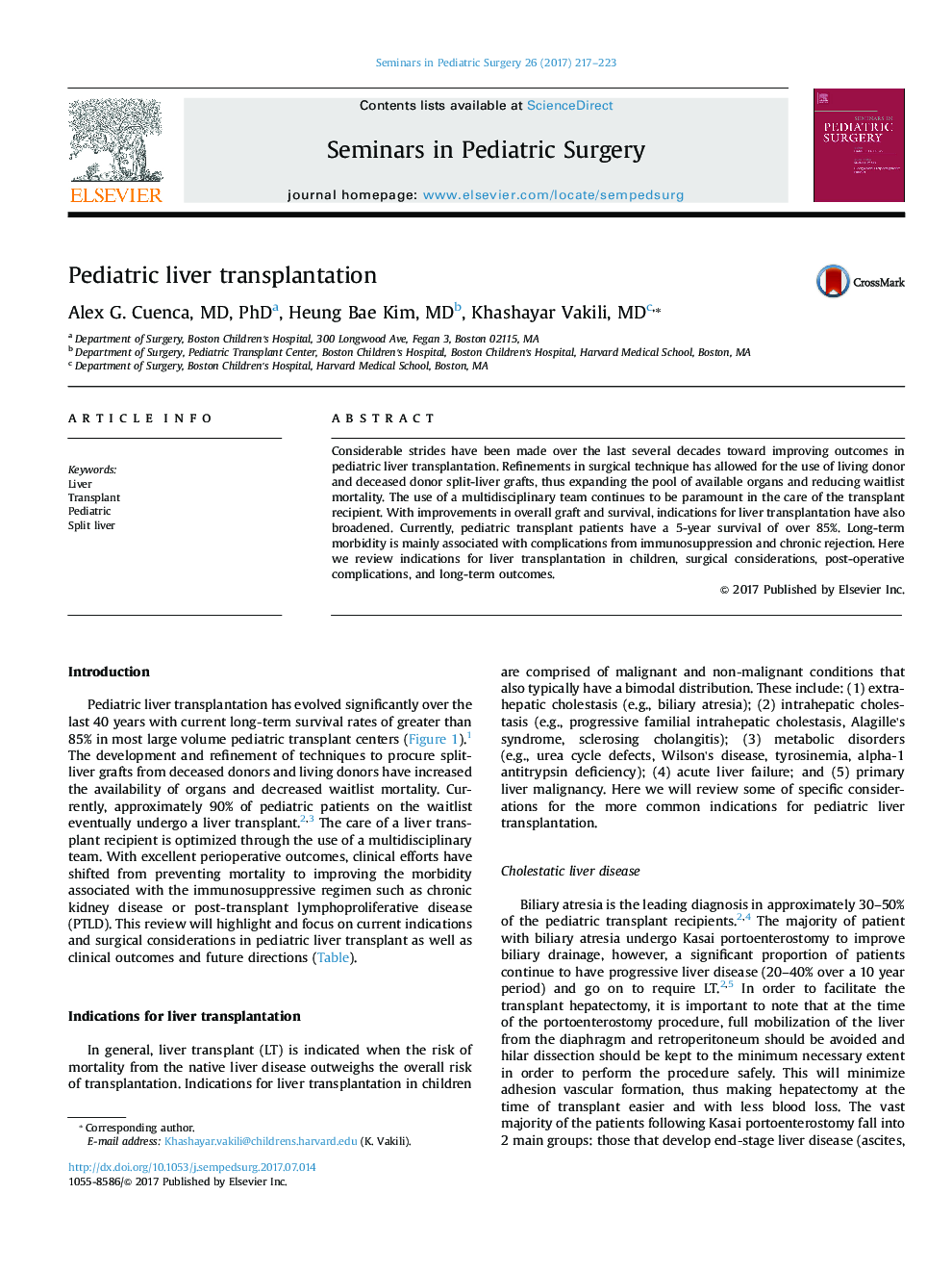| Article ID | Journal | Published Year | Pages | File Type |
|---|---|---|---|---|
| 5720284 | Seminars in Pediatric Surgery | 2017 | 7 Pages |
Considerable strides have been made over the last several decades toward improving outcomes in pediatric liver transplantation. Refinements in surgical technique has allowed for the use of living donor and deceased donor split-liver grafts, thus expanding the pool of available organs and reducing waitlist mortality. The use of a multidisciplinary team continues to be paramount in the care of the transplant recipient. With improvements in overall graft and survival, indications for liver transplantation have also broadened. Currently, pediatric transplant patients have a 5-year survival of over 85%. Long-term morbidity is mainly associated with complications from immunosuppression and chronic rejection. Here we review indications for liver transplantation in children, surgical considerations, post-operative complications, and long-term outcomes.
